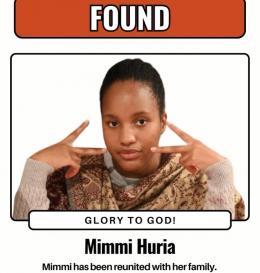| PHOTO: | Subjects were more Africanized photo by digital standard |
|
| |
|
|
By:
by the Editor
|
| Posted:
Dec,08-2016 13:07:46
|
|
| |
|
Urbanites are normally surprised to learn that students in shags are taught in vernacular from lower primary.
There are challenges galore in exciting nomadic Turkana children about coffee, a cash crop that's grown in Central Kenya, and which they have never seen with their naked northern Kenya eyes, and worse, has no nutritional relevance to their livestock. Learning in vernacular--which one speaks at home, church and the playground--entrenches thinking in mother tongue. In adulthood, this becomes one major impediment when communicating in English and Kiswahili in social, business and corporate settings.
The other verbal result of learning in vernacular is 'shrubbing' and for which urbanites find endless humour. For a certain community in Central Kenya, 'shrubbing' consists of interchanging the 'L' and 'R,' while for others, the difference between 'sh' and 'ch' is the same, meaning you should not raise eyebrows when they say 'waka--chop' to mean 'workshop.' For yet another community in Luo Nyanza, 'kucheswa' means 'you have been played' and for another in Eastern Kenya, 'yana' is not the name of a tyre brand, but Kiswahili for 'yesterday!'
Well, scholars like Dr James Oranga of the University of Nairobi School of Journalism can 'eliminate shrubbing,' but did you know the use of Kikuyu to teach about Vasco da Gama in history lessons stretches back to 1935?
That was when the colonial government issued a circular directing that all schools in rural Kenya to employ mother tongue as language of instruction. But alas! only Kiswahili, Kikuyu, Dholuo and Kiluhyia were used at first from recommendations by the Phelps Stokes Commission of 1924. And with 42 languages in Kenya, you can picture 'Kaos' the 'Murumes' learning in Kikuyu even as Nandi was added to cater for the 'Kales.'
It wasn't until the Beecher Report of 1949 were languages from other communities were added, including Giriama, Pokot, Galla, Sagalla, Taveta, Suk, Kisii, Tende, Tesiot, Boran, Turkana and Somali, as Dr Munene Mwaniki notes in Mother Tongue Education in Primary Teacher Education in Kenya, a research which was published in 2014.
This language policy in education which emphasised the use of vernacular in 'linguistically homogenous school neighbourhoods' continued and was supported by UNICEF, which declared in 1953 that mother tongue was the best for those between class one and four because "they understood it best" and to "begin their school life in mother tongue will make the break between home and school as small as possible."
But there were hardly any text books in mother tongue and vernacular vocabulary was limited when it came to terminologies, given that many languages have several dialects and in the end, exams were set in English.
Munene Mwaniki, a lecturer in Linguistics and Language at South Africa's University of Free State, notes that this tradition of using mother tongue as recommended by the Beecher Report and its TKK (Tujifunze Kusoma Kikwetu) programme has continued ever since it was fully adopted in 1968 and implemented eight years later.
|
|
Source:
|
|


.jpg)




